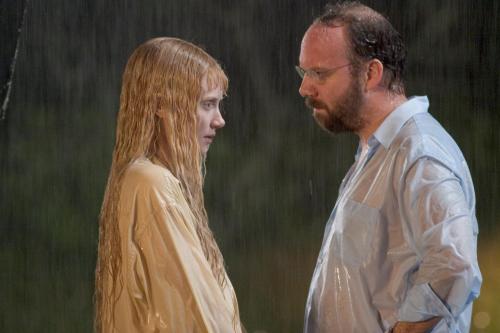The Happening is a non-event: Has M Night Shyamalan lost the plot?

What has happened to the career of M Night Shyamalan?
Less than a decade ago, after the shock success of The Sixth Sense, the Indian-born, Philadelphia-raised director was being spoken of in the same breath as Spielberg and Hitchcock as a budding master of suspense. Now the appearance of a Shyamalan film is more likely to provoke derision than praise.
Things were very different back in 1999 when The Sixth Sense took everyone by surprise. Who then would have thought that a supernatural thriller from an almost unknown 28-year-old director would win staggering box-office success, let alone one starring Bruce Willis, the wisecracking, singlet-wearing star of the Die Hard films, as a caring, compassionate child psychologist?
Well, as we now know, The Sixth Sense took the world by storm, becoming the second most successful film of 1999 after that year’s unstoppable Star Wars prequel, The Phantom Menace, and grossing almost $300million in the US alone. Who could have imagined that? Perhaps Willlis knew something the rest of us didn’t. Before shooting, he agreed to accept a cut in his usual fee in return for a percentage of the profits.
Of course, a sizeable percentage of The Sixth Sense’s box-office take probably came from viewers paying again to spot how they’d been tricked by the film’s now notorious twist.
With the benefit of hindsight, however, it’s clear that it wasn’t the twist that made The Sixth Sense special. What was truly impressive was that at a time when the Scream movies and their imitators were peddling over-the-top gore and knowing irony, Shyamalan had crafted a movie that didn’t rely on sudden shocks to produce its scares.
Instead, the film’s menace came from a pervasive atmosphere of unease and dread that pricked the hairs on the back of your neck as the realisation dawned that Haley Joel Osment’s deeply disturbed eight-year-old boy can see ghosts.
The latest updates, reviews and unmissable series to watch and more!

Yet the late-breaking plot twist became Shyamalan’s gimmick – with steadily diminishing returns in his subsequent films. He was still good at creating a sense of menace from the simplest of elements – as he proved with the best bits in Unbreakable, Signs and The Village. But with each film he couldn’t resist springing a surprise in the final reel, with the result that you went to a Shyamalan movie bracing yourself for a neck-wrenching revelation.
All the same, many people continued to give Shyamalan the benefit of the doubt until he produced the lamentable Lady in the Water - a monumental folly of a film that shows what happens when a writer-director starts believing he is an infallible genius.

The film had its origins in a bedtime story told by Shyamalan to his two daughters, a fairy tale featuring such invented creatures as Narfs, Scrunts and the Great Eatlon. The sheer awfulness of these names was a tip off that Shyamalan’s invented mythology was flimsy stuff, but the act of stretching it into a movie narrative involving a stuttering caretaker (Paul Giamatti) who finds a sea nymph (Bryce Dallas Howard) living beneath an apartment complex swimming pool simply highlighted its feebleness.
Shyamalan built into the film a pre-emptive strike against his detractors – casting Bob Balaban as a cynical film critic and then killing him off. Significantly, he also humbly cast himself in the film in the role of a writer whose work is destined to change the world. Yet even this conceit wasn’t as irritating as the vague, non-denominational, New Age spirituality that underpinned the whole rickety edifice.

There’s more pseudo-mystical piffle in Shyamalan’s latest movie, The Happening, which has just come out on DVD this week. A fable that seeks to exploit post-9/11 anxieties and fears of ecological catastrophe, it’s nowhere near as awful as Lady in the Water but despite some chilling sequences still fails to redeem Shyamalan’s career.
The film opens in New York’s Central Park where something in the air is causing people to commit suicide en masse. As the threat spreads, Philadelphia school science teacher Elliot (Mark Wahlberg) and his semi-estranged wife Alma (Zooey Deschanel) take steps to leave the city, together with their friend Julian (John Leguizamo) and his young daughter Jess (Ashlyn Sanchez). But the invisible menace pursues them as they travel away from centres of population to ever more remote rural areas.
Is it a terrorist attack? A government blunder? Or is it the revenge of nature on humankind in the form of neurotoxins released by plants that send the human impulse for self-preservation into reverse? Of course, it’s the latter, as Shyamalan heavy-handedly spells out. And as the cause dawns on Elliot and his companions the presence of the wind rustling the trees and the meadows becomes a portent of doom.
You get a sense that Shyamalan is straining to achieve the apocalyptic menace that Hitchcock pulled off in The Birds, but whereas Hitch could make the sight of birds slowly gathering on a climbing frame supremely frightening, his would-be successor strives but fails to make us afraid of the grass.
As for what gives me the willies, I’m beginning to shudder when the words “written, directed and produced by M Night Shyamalan” appear at the start of a film.
A film critic for over 25 years, Jason admits the job can occasionally be glamorous – sitting on a film festival jury in Portugal; hanging out with Baz Luhrmann at the Chateau Marmont; chatting with Sigourney Weaver about The Archers – but he mostly spends his time in darkened rooms watching films. He’s also written theatre and opera reviews, two guide books on Rome, and competed in a race for Yachting World, whose great wheeze it was to send a seasick film critic to write about his time on the ocean waves. But Jason is happiest on dry land with a classic screwball comedy or Hitchcock thriller.


